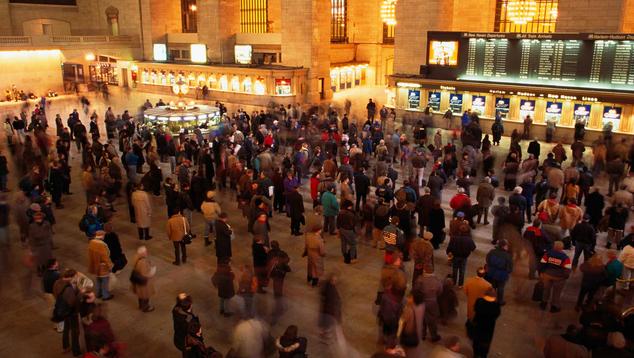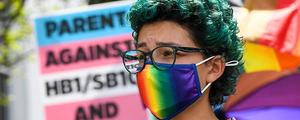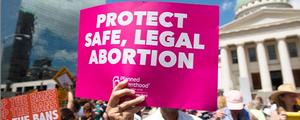Story Highlights
- Similar percentages in U.S. identify as socially liberal, socially conservative
- Economic conservatives have sizable edge over economic liberals
- Democrats have shifted left on both types of issues over the past two decades
WASHINGTON, D.C. -- The U.S. public is more closely divided on social issues than on economic issues, according to Americans' description of where they stand on each broad category of topics. Nearly equal percentages of U.S. adults now identify as socially liberal (34%), moderate (35%) or conservative (30%). By contrast, Americans lean decisively conservative on economic issues, with 41% identifying their economic views this way versus 25% as liberal and 34% as moderate.
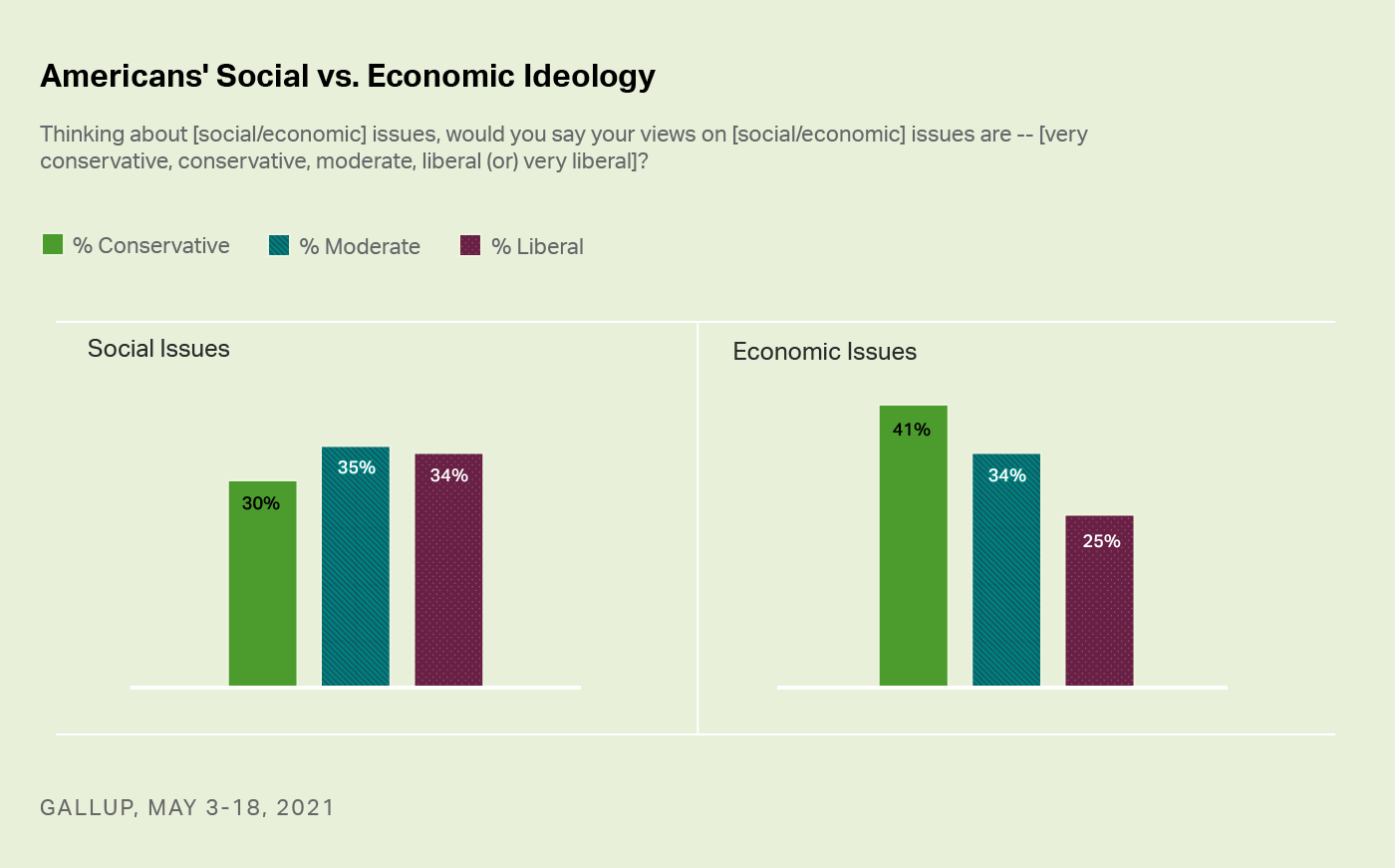
Side-by-side bar graphs showing Americans ideology on social and economic issues. On social issues, 30% are conservative, 35% moderate and 34% liberal. On economic issues, 41% are conservative, 34% moderate and 25% liberal.
These findings are from Gallup's annual Values and Beliefs poll, conducted May 3-18.
Social Issues Sharply Divide Americans
This is the first year in Gallup's trend since 2001 that more Americans have identified as liberal than as conservative on social issues. Although the four-percentage-point gap is not statistically significant, it represents a numeric milestone in the trend, which has seen Americans' social views becoming more liberal over the past decade.
In most years from 2001 to 2012, social conservatives had a clear advantage over social liberals -- by 12 points, on average. Conservatives' edge shrank to five points in 2013 and, since then, has either remained in single digits or social conservatives and liberals have been tied.
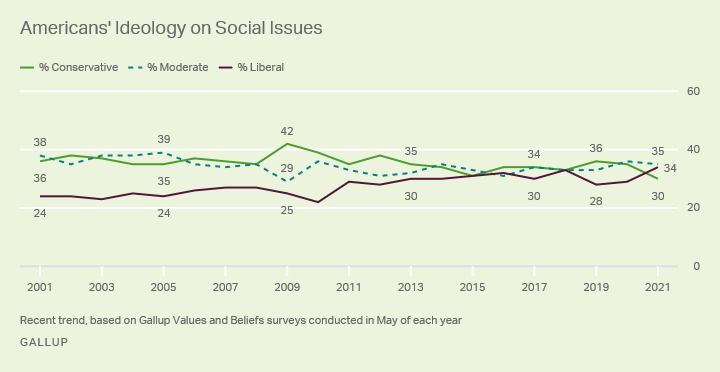
Line graph. Annual trend from 2001 to 2021 in Americans' self-described position on social issues as either conservative, moderate or liberal. The percentage conservative has fallen from 36% in 2001 to 30% today while the percentage liberal has increased from 24% to 34%. The percentage moderate has changed less, registering 38% in 2001 and 35% today.
Conservativism Continues to Be Leading Economic Perspective
Changes since 2001 in Americans' stance on social issues contrast with their self-described economic views. These have remained predominantly conservative over the past two decades, with moderates a close second and liberals the smallest proportion of the three.
Economic conservatives' lead over liberals has narrowed since 2019 as more Americans have identified as economically liberal, rising from 18% in 2019 to 25% today. However, conservatives have held steady at about 40% while moderates have declined slightly.
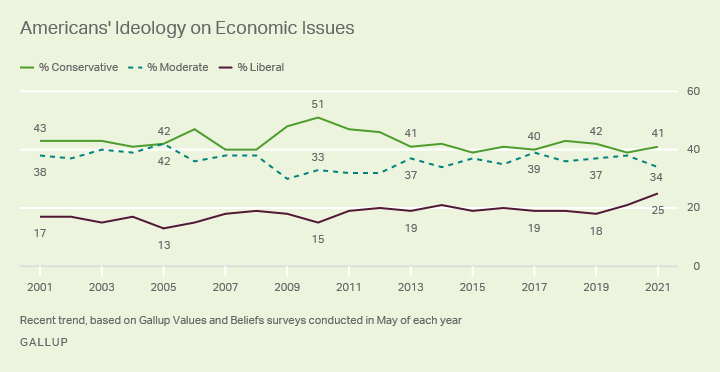
Line graph. Annual trend from 2001 to 2021 in Americans' self-described position on economic issues as either conservative, moderate or liberal. Views have been fairly steady over this period with the percentage identifying as conservative rarely straying far from the average 43% since 2001. Meanwhile the percentage moderate has declined slightly from 38% to 34% while the percentage liberal has increased from 17% to 25%.
Summarizing Ideological Views With Net Conservative Index
Americans' ideological views on both types of issues can be summarized by looking at the net conservative index, defined as the percentage conservative minus the percentage liberal on each dimension. The higher the value, the higher the conservative advantage, while negative values indicate that liberals outnumber conservatives.
The net conservative figure was positive for both in 2001, but it has gradually diminished on social issues to the point that it is now slightly negative. Meanwhile, it has been solidly positive on economic issues throughout the trend.
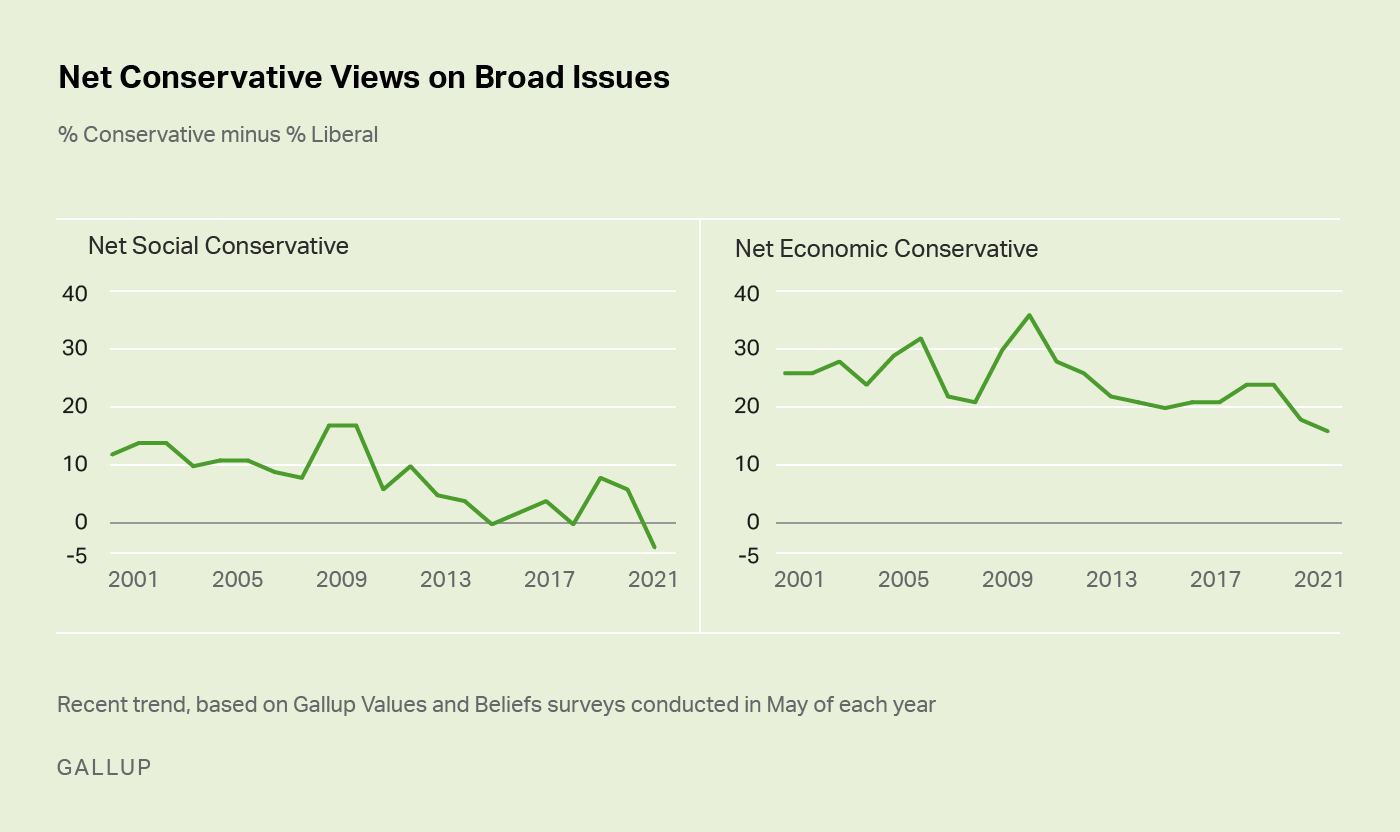
Side-by-side line graphs showing trend from 2001 to 2021 in net-conservative views on social issues and economic issues. The percentage net conservative is the percentage identifying their views on each issue as conservative minus the percentage identifying as liberal. The net conservative percentage has declined over the past two decades for Americans economic as well as social views However, while the net conservative figure is now negative on social issues, it remains solidly positive on economic issues.
Democrats Driving Decline in Social Conservatism
The decline in net conservatism on social issues over the past decade is mostly due to fewer Democrats identifying as socially conservative at the same time that Republicans' and independents' descriptions of their social views have stayed the same.
Democrats have also become less conservative on economic issues while Republicans have become slightly more conservative on them, with little change among independents. As a result of these offsetting trends, there has been less change in Americans' economic views than social views overall.
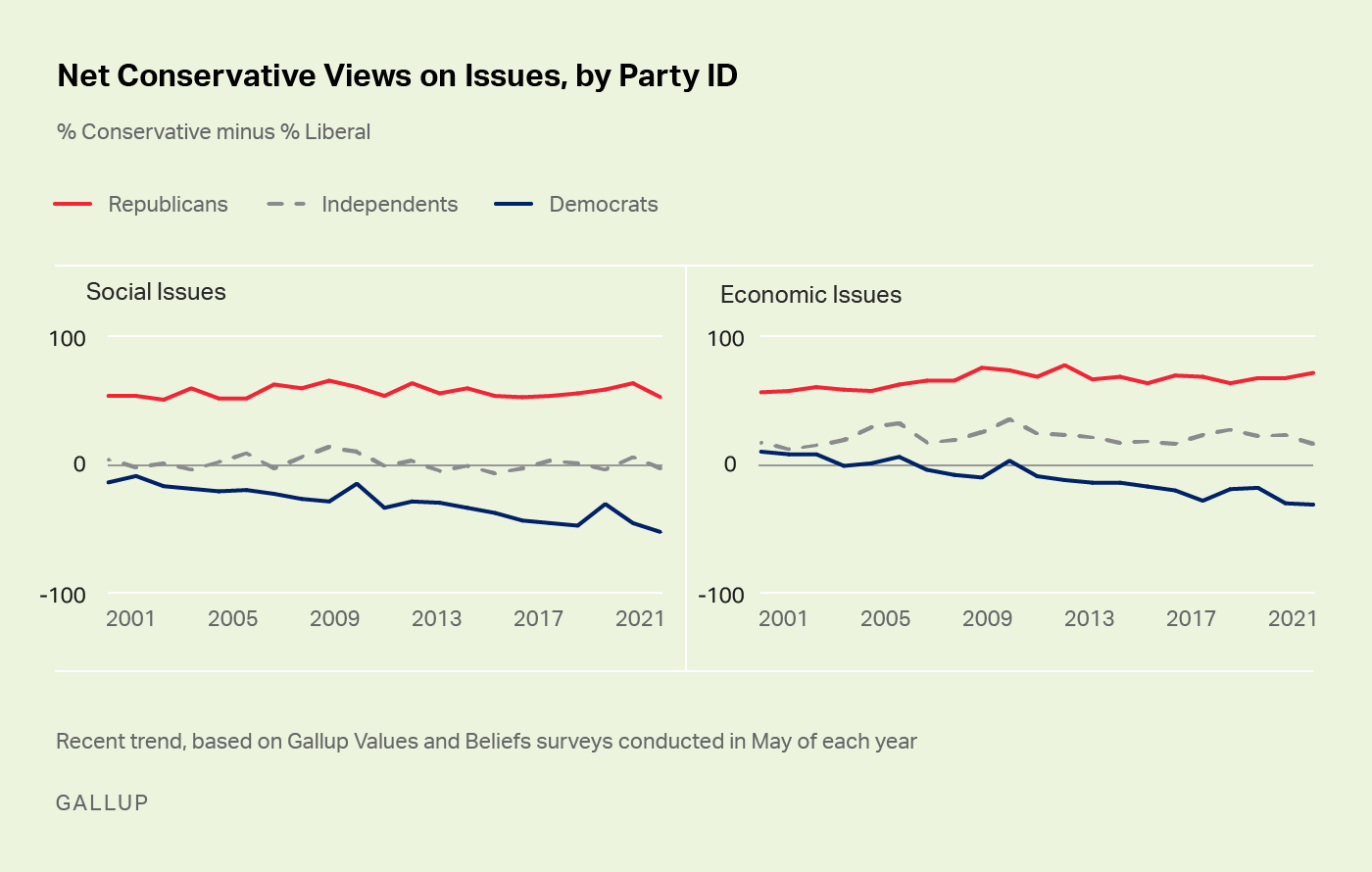
Side-by-side line graphs showing trend from 2001 to 2021 in Americans net-conservative views on social and economic issues by party ID. Republicans have solidly positive net conservative views on both issues while independents are neutral on social issues while slightly conservative, on balance, on economic issues. Democrats have grown increasingly less conservative on both issues, and are now more liberal than conservative on both.
Social Conservatism Also Wanes Among College Graduates
Similarly, net conservativism has declined among college graduates at the same time it has stayed fairly even among those without a college degree. From 2001 to 2012, college graduates were generally divided in their views on social issues, with the net conservative figure hovering near the zero midpoint. Since then, the index has fallen into decidedly negative territory among college graduates, indicating that more identify as socially liberal than conservative.
College graduates' views are relatively more conservative on economic issues and have changed less over time. However, this is the first year their net conservative index figure has fallen into single digits.
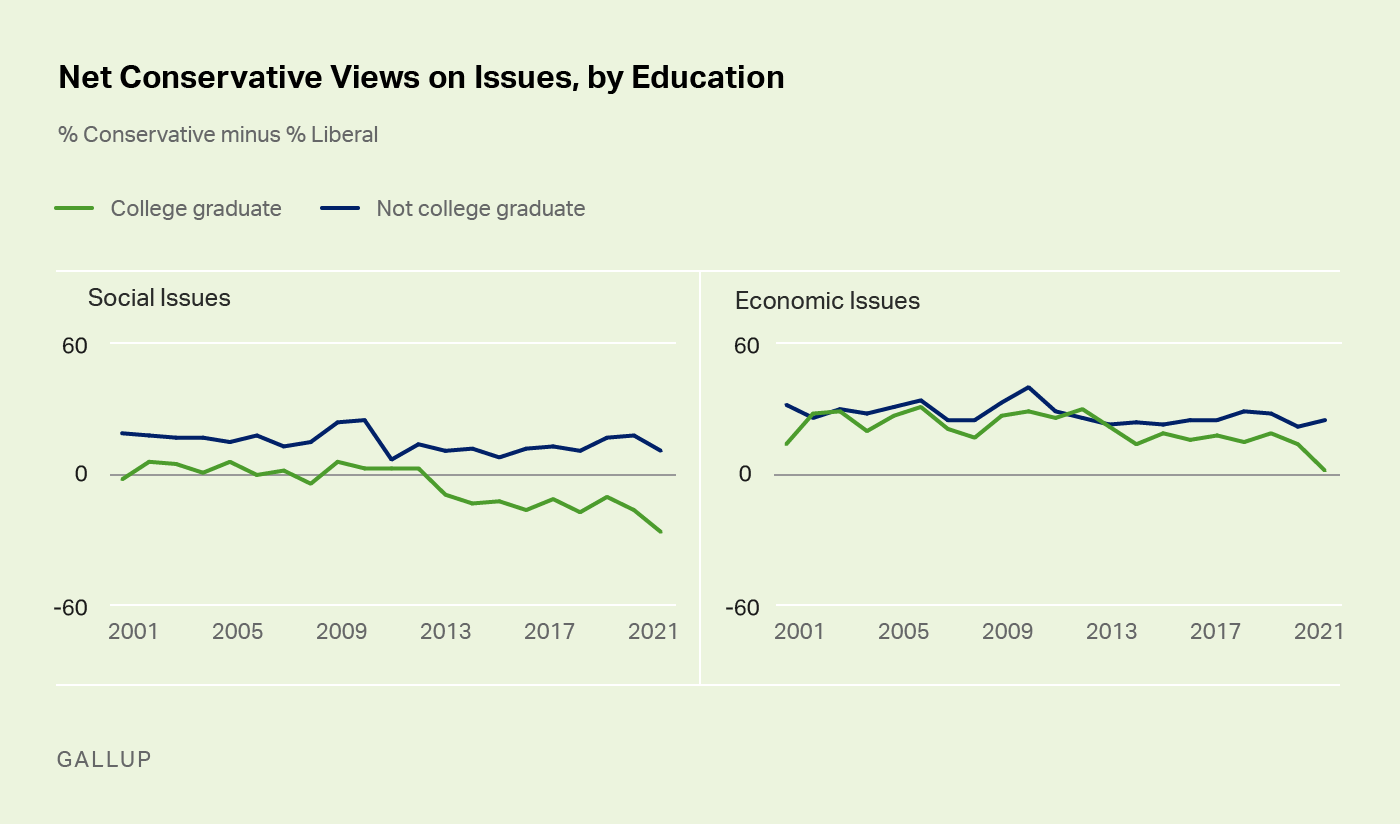
Side-by-side line graphs showing trend from 2001 to 2021 in Americans net-conservative views on social and economic issues by education. Americans who are college graduates are less conservative on both issues than Americans who are not college graduates, although the gap has consistently been wider for on social issues. Currently, college graduates net conservative score is negative on social issues while neutral on economic issues. Non-college graduates have a slightly positive net conservative score on social issues and a stronger net conservative score on economic issues.
Racial and Age Differences Persist Despite Slight Changes
To varying degrees, White Americans have generally been more conservative than non-White Americans on social as well as economic issues since 2001, a pattern that is consistent with Americans' partisan leanings.
Still, both racial groups have become less conservative on social issues over time, with roughly equal declines among White and non-White Americans. On economic issues, there has been some decline in net conservatism among non-White Americans versus little overall change among White Americans.
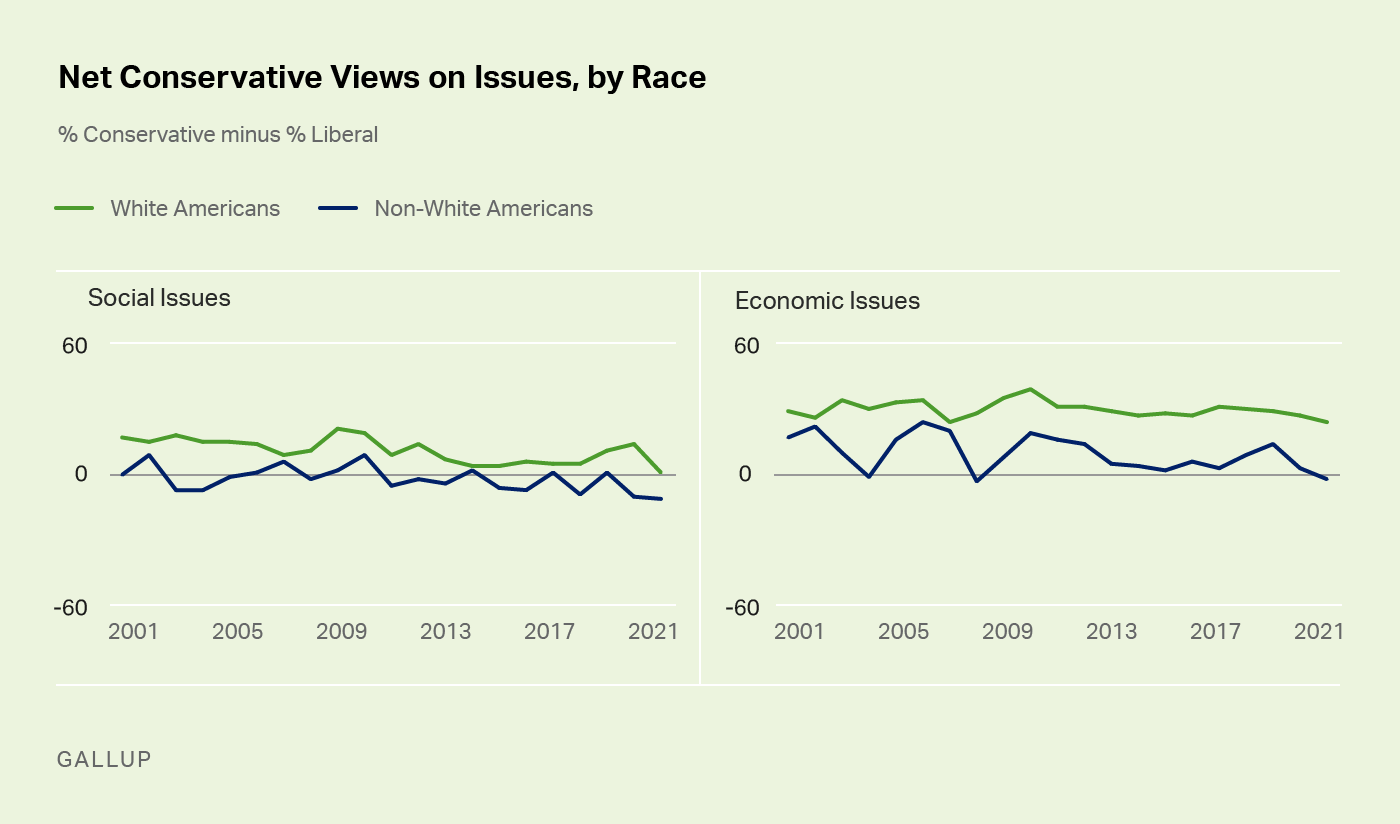
Side-by-side line graphs showing trend from 2001 to 2021 in Americans net-conservative views on social and economic issues by race. White Americans have consistently had higher net conservative scores on both issues compared to non-White Americans, but both groups are more conservative on economic issues than social issues. Currently, White Americans are neutral on social issues while Non-white Americans are slightly liberal. On economic issues, white Americans are somewhat conservative on balance while non-White Americans are neutral.
Net conservatism has consistently been correlated with age, being higher among adults aged 55 and older and those aged 35 to 54 than among those aged 18 to 34.
Young and middle-aged adults have grown less conservative over time on both types of issues, while there has been less change among older adults.
On social issues:
- Adults aged 18 to 34 have shifted from being about equally split on social views in the early 2000s, with a net conservative score near zero, to having a substantially negative net conservative score of -21 today.
- Adults aged 35 to 54 have shifted from being modestly conservative on social issues in 2001 to slightly more liberal than conservative in 2021.
- Older adults, those aged 55 and older, have become slightly less conservative, shifting from +23 in 2001 to +13 today.
On economic issues, young adults have shifted from leaning conservative to being about equally split. Middle-aged adults have shifted from being solidly to moderately conservative, while older adults' net conservative score remains high.
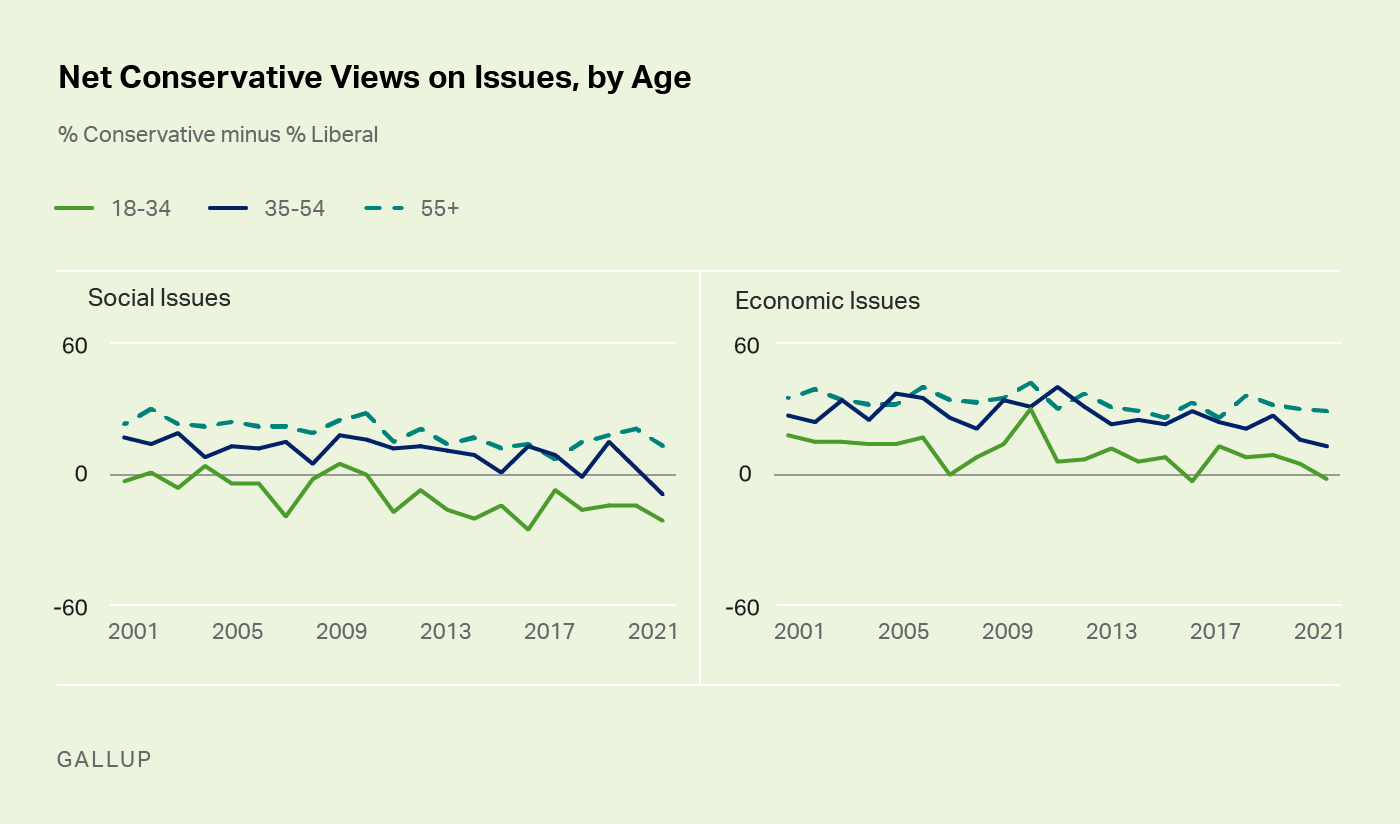
Side-by-side line graphs showing trend from 2001 to 2021 in Americans net-conservative views on social and economic issues by age. Americans aged 55+ and aged 35 to 54 have consistently had higher net conservative scores on both issues than adults aged 18 to 34. All three groups are more conservative on economic issues than social issues. On social issues currently, adults 55 and older area slightly conservative, on balance, while those 35-54 are slightly liberal and those 18 to 34 significantly more liberal than conservative. On economic issues currently, adults 55+ and aged 35 to 54 are somewhat conservative while adults 18 to 34 are neutral.
Bottom Line
Americans are far from unified when it comes to economic or social issues, broadly speaking. Of the two, however, economic issues offer more promise for finding common ground given Americans' center-right leanings, in contrast with their highly fractured outlook on social issues.
To stay up to date with the latest Gallup News insights and updates, follow us on Twitter.
Learn more about how the Gallup Poll Social Series works.
